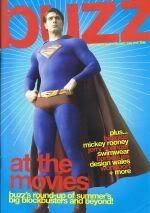Let Me In (2010)
Not all vampires live in castles. Since Dracula’s day, vampires have had to downsize significantly: but while Louis and Lestat might’ve had a gorgeous big house in New Orleans, Let Me In’s Abby has to make do with a poky flat in a suburb of a small New Mexico town. The walls are so thin that her neighbours can hear every time she raises her voice, and the windows are covered over with cardboard. Even a thick blanket of snow can’t make her Los Alamos home look anything other than rundown and dreary.
Let Me In is a wonderfully real vampire story, based – of course – on Swedish novel, and film of the same title, Let The Right One In. As remakes of foreign horror movies go, it’s by far the best. In fact, it might even be superior to the much loved Swedish film (though suggesting that is regarded as blasphemy in some circles!). Let Me In pares the story down to its most essential elements, disposing of almost all of the subplots and extraneous characters that populated the world of the novel and focusing right in on the main relationship of the story: the weird love affair that blossoms between vampiric Abby and her next-door neighbour, a sad, bullied 12-year-old called Owen.
Owen’s life is, basically, miserable. His parents are getting divorced: his father is absent, and his mother isn’t much better. (To the point where we never quite see her face in the film, and only hear his dad’s voice over the phone.) He’s bad at sports, addicted to sweets, and mercilessly bullied by a gang of boys at school – to the point where he takes up afterschool strength training in a hopeless effort to stand up to them. When a mysterious family move in next door, he’s determined to make friends with the girl, despite her warnings. They bond over, um, a Rubix cube, and the lack of anyone else to talk to, and she encourages him to stand up to the bullies. But as they grow closer, Owen discovers that Abby really is strange: she doesn’t feel the cold, sometimes smells funny, and turns into a monster when he attempts a blood-bonding ceremony with her. Ultimately, though, she’s the only one who seems to understand him (or even pay him attention that doesn’t involve beating him up) and he becomes fiercely loyal to her, even as the body count starts to rack up.
The novel is littered with subplots and background characters: there are the town drunks, two of whom are repurposed in Let Me In as Virginia and her boyfriend, though they get have a much smaller role to play here; there’s Oskar’s neighbour, Tommy, who only gets a passing mention this time round; and all of the other characters, particularly Hakan (who doesn’t even get a name in Let Me In) are far more fleshed out. There’s also a brief historical interlude in the novel where we find out a bit about how Eli became a vampire, including the revelation that she’s actually a boy – he was crudely castrated as part of the ritual that presumably made him a vampire. This is only fleetingly referred to in the Swedish film, when Oskar spies on Eli getting changed and spots the scar; it’s kind of confusing, and not something the film had time to really explore. Without that complication, Abby’s line “Would you like me if I wasn’t a girl?” means something slightly different: because she isn’t a girl. She’s a vampire. Let Me In changes the story by choosing which elements of the novel it retains or discards, but it’s still a great story.
And it’s beautiful. Really, really beautiful. The movie borrows some visual elements from its predecessor – though they’re also things that are important in the novel, like the dismal housing estate the characters live on – but adds its own style. It uses the ubiquitous teal and orange colour palette, but for once, it’s for a good reason: the film is full of fire and ice, and the colours in every scene seem to reflect that contrast. There’s the cool blue swimming pool, and the orange glow of the bonfire; the cold blue snow, and the warm orange living room. Almost any shot from the film could be frozen and used as a poster, it’s just gorgeous to look at.
The acting, too, deserves a mention: it’s fantastic. The two children, in the absence of almost anyone else at all, have to carry the movie, and they’re both brilliant. Chloe Moretz’s Abby is just as weird and cold as Eli in the original, while Kodi Smit-McPhee’s Owen is by turns creepier and more sympathetic than Oskar.
The only problem with Let Me In is that the action sequences largely don’t work. The choice to use CGI to make vampiric Abby freakishly fast feels strange, and her spidery form is the only thing in the film that doesn’t look real. It’s also unnecessary plotwise: every time Abby is forced to attack someone, things are set up to allow her to do so easily. She doesn’t need to move so fast – she arranges her attacks deliberately, coaxing her victims to lift her in their arms, or dropping onto them from a tree branch above their heads. The only time her strength and speed is necessary is in the final swimming pool scene – which we don’t see, anyway, watching from Owen’s perspective under the water’s surface. And the non-CGI action sequences aren’t much better, generally seeming comical rather than disturbing. The scenes where Abby’s “father” goes out to hunt for her could be creepy, but seem instead to be played for laughs, which is kind of a shame. Let Me In is more of a horror movie than Let The Right One In was, but neither comes close to approaching the brutal, disturbing darkness of the novel.
It’s strange, because Let Me In is exactly what fans of the original most feared: it’s simpler, glossier, and frequently more obvious with its themes. It’s clearer what the stakes are, too. But that doesn’t stop it being a great film. It’s visually stunning, well paced, and frequently horrifying. Matt Reeves is, in my book, two for two: Cloverfield and Let Me In are radically different films, but they’re both excellent.
One final note: the repeated use of the Now & Later theme might seem out of place at first, but when it recurs at the very end, it’s downright chilling. Brrr.











No comments:
Post a Comment